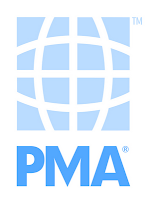Columbia Station, OH -- I was talking to someone today about the giga-pixel image taken at Barack Obama's inauguration. The picture was taken by David Bergman from the official press core stand along side the capital. If you haven't seen it, it's worth a
click here to take a look. From an extremely wide angle, you are able to zoom in to amazing closeup detail.
In the fourth row, directly behind the president, you can see Hilary taking a short cat nap. Further back, look at the number of congressman taking digital pictures of the event. You can see others checking their Blackberries.
The news now is that the manufacturer,
GigaPan Systems, is now out with their second model, the GigaPan Epic 100. With this new model, larger cameras can be used, not just point and shoots.
The Epic 100 can accomodate Nikon D40, D60, D80 and the D90, as well as Canon Rebel 400D plus many others of similar size. The astounding part to me, is that it sells for only $449.00, including the stitching software. You can spend that amount for stitching software elsewhere and not get any hardware included, so I think that price is a steal.
Now I'm looking for that "just right" project to pick one up. (Send in your suggestions.)








